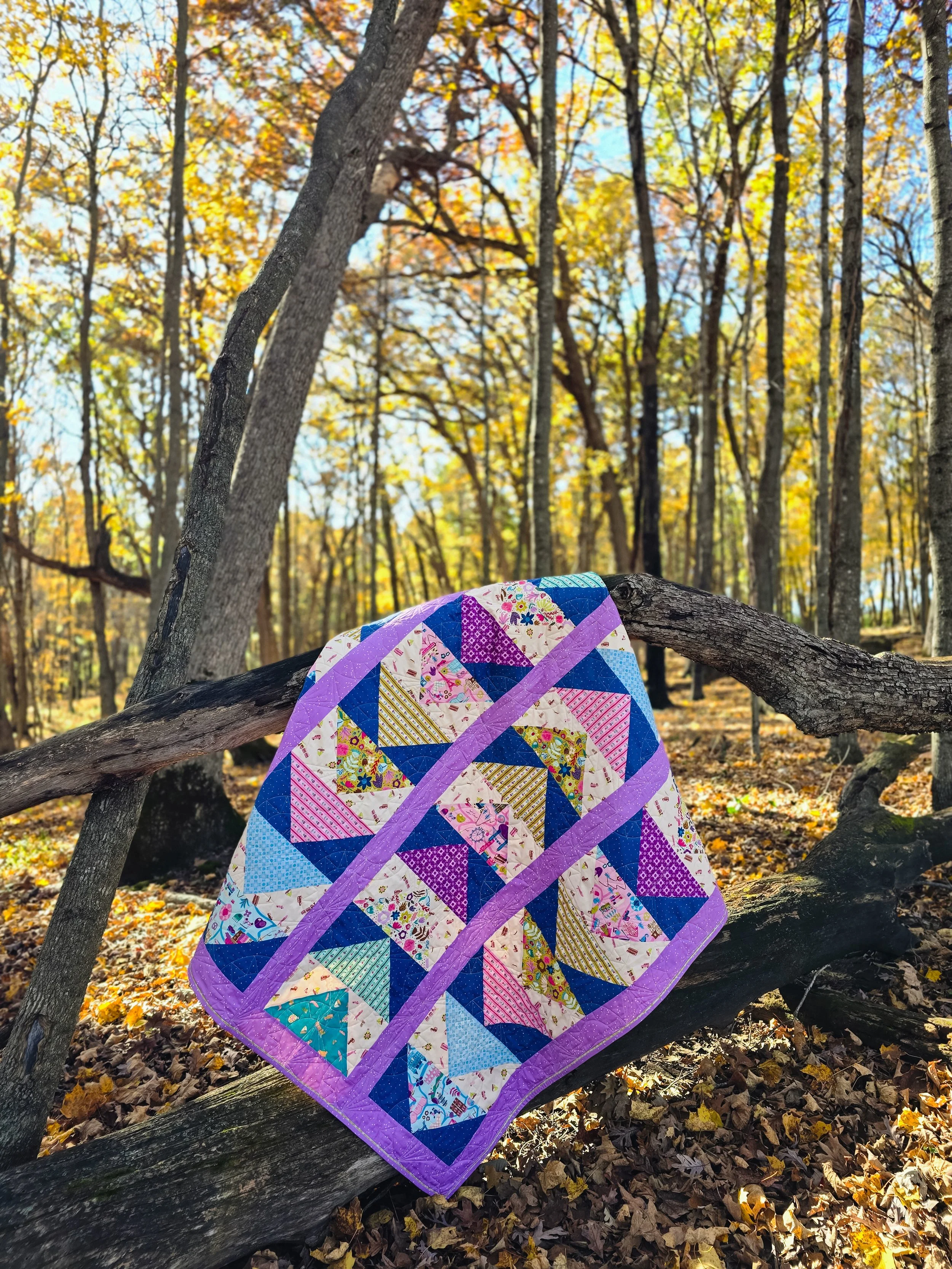In the Wind Quilt Tutorial: Using Multiple Background Fabrics
Hello fellow makers! Lately, I’ve been enjoying the kind of sewing projects that come together quickly but still feel special. The In the Wind Quilt is one of those designs that feels simple, modern, and full of movement, and today I’m sharing a fun twist on it.
This version uses 3 different background fabrics instead of one. It’s a small change that adds beautiful depth and texture without extra effort, and it might just become your new favorite way to sew this pattern.
Why Three Backgrounds Work So Well
If you’ve ever wanted to give your quilt more movement and visual interest, mixing background fabrics is a great way to do it. In this version, I used the Genesis of A Journey collection by Genesis Hall for Riley Blake Designs, pairing three soft backgrounds with ten fat quarters.
Choosing Your Background Fabrics
When picking your three backgrounds, look for fabrics that share a similar tone or value so they read as one cohesive group. I like to choose one light, one medium, and one that has just a bit of texture or print. You can stay within one color family or mix a few neutrals such as cream, taupe, and light gray for a soft, blended look.
If you’re using a busier print for your accent fabrics, calmer backgrounds will help your flying geese stand out while keeping the design balanced.
Fabric Requirements for the 3-Background Version
If you’d like to make this variation exactly as shown, here’s the fabric breakdown I used:
Cream Background: ⅞ yard (for sky - Flying Geese wings)
Blue Background: ⅞ yard (for sky - Flying Geese wings)
Purple Background: 1 ⅛ yards (for sashings and borders)
Accent Fabrics: 10 fat quarters (for goose aka Flying Geese centers)
Instead of using 2½ yards of one background fabric, these three work together to create a soft color transition throughout the quilt.
Cutting and Sewing Tips
You’ll cut and sew everything the same way as the original In the Wind Quilt pattern, just dividing your background pieces among the three fabrics. When assembling your rows, alternate the backgrounds so the tones flow evenly across the quilt top. This creates a gentle wave of variation without looking patchy or random. The rest of the process goes quickly with large Flying Geese units, clean seams, and simple rows that come together in no time.
Cutting
Background I (Cream):
(20) BG1
Background II (Blue):
(20) BG1
Background III (Purple):
(5) BG2
(2) BG3
Accent (10 FQs):
(10) A1
Finishing Touches
For the binding, I went with a flange binding for a subtle pop of color and extra dimension around the edges. It’s a simple way to frame the quilt and highlight your accent fabrics. If you’ve never tried it before, it’s easier than it looks and adds such a professional touch to your finish.
Make It Your Own
This version is quick to sew, beginner-friendly, and full of creative possibilities. Try blending low-volume prints, mixing solids and basics, or using color to tell your own story through fabric. If you make one, I’d love to see it! Tag me on Instagram @ThaiCharmLLC so I can cheer you on and share your beautiful version with our maker community.
Happy sewing,
Sandy














